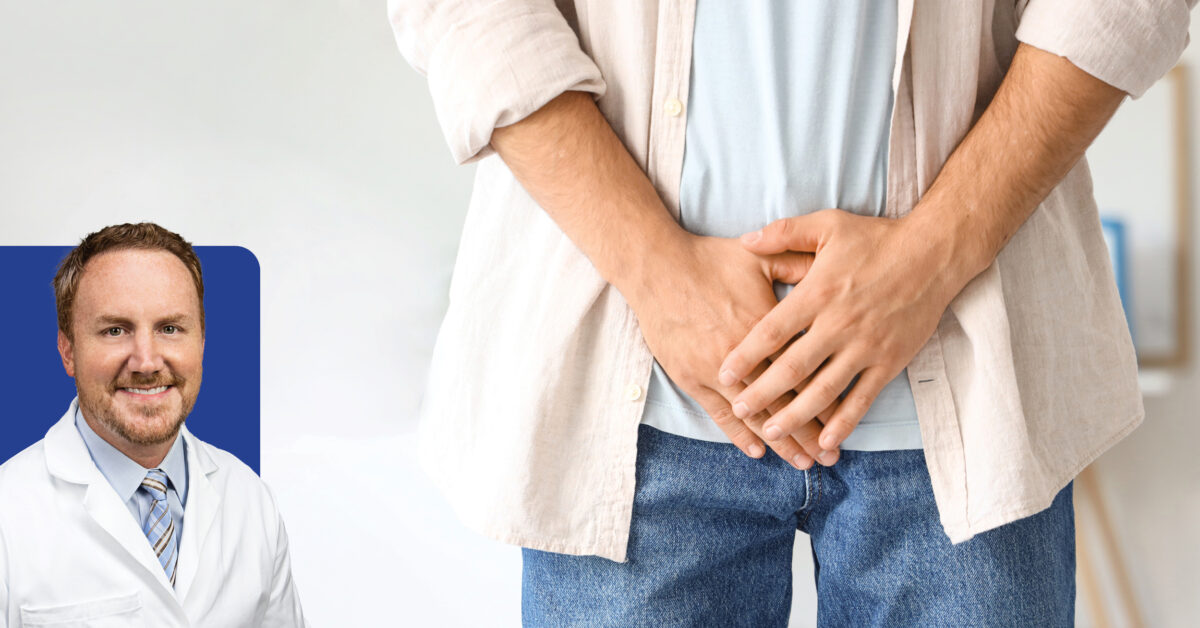
Recovery Spotlight: Pronia’s Deli & Bakery
August 2022
988 Suicide Hotline can Save Lives
September 2022Thrive magazine encourages all our readers to live their best lives. A primary aspect of living well is simply learning how to take good care of yourself. September is National Self-Care Awareness Month – the perfect time to discuss how to tend to oneself. Self-care is a multi-faceted concept, encompassing physical health through diet, exercise, quality sleep, as well as mental health, which can include social interactions, life-long learning, volunteering, and taking time out for rejuvenation. In this issue, we home in on our “mature” readers – those in the age range when people, often out of necessity, start to take their health seriously, possibly for the first time in their lives.
You Are What You Eat
by Stefanie Powers
Why is it that so many of the foods we love aren’t good for us? Fried chicken, burgers, cracklins . . . It doesn’t seem fair!
But taking care of yourself requires good nutrition and eating a balanced diet. It’s important to make sure you get the nutrients, vitamins, and minerals your body needs to function properly.
Dr. John Groves, Family Medicine Specialist with Lake Charles Memorial Health System, says that a balanced diet should be enjoyed—but sometimes, that’s easier said than done.
“Diets heavy in one item often result in weight loss, but our bodies require a wide variety of vitamins, minerals, and proteins to stay healthy,” he explains.
If you’re on a diet that eliminates certain good, whole foods, then that’s a problem. And if you’re a meat and potatoes person, you’re missing the boat if you don’t add greens and fruits to your daily diet. Healthy eating emphasizes fruits, vegetables, whole grains, dairy, and protein. To start eating healthy, add the right foods to your daily diet and cut down on the bad stuff.
Dr. Groves say a balanced diet should be heavy with plant food. “And be liberal with whole foods,” he advises. “Foods with fewer ingredients are better for you.”
Fiber helps maintain digestive health, helps us feel fuller longer and assists in controlling blood sugar and lowering cholesterol levels. And it’s not that difficult to add to your diet. Slice up raw vegetables for snacks. Start the day with a whole grain cereal like oatmeal, and for even more fiber, top your cereal with berries or almonds. Have an apple or pear with a meal or for dessert. Enjoy a big salad, often. Easy!
Calcium and vitamin D work together to promote optimal bone health. Our bodies can make vitamin D from sunshine, but some of us may have difficulty producing enough, and too much sun exposure can increase the risk of skin cancer. While very few foods naturally contain vitamin D, several foods and beverages are fortified with it. Foods such soy beverages, soy yogurt, orange juice, and some whole-grain cereals may have these added nutrients. Include spinach, collard greens, bok choy, mushrooms, and taro root in your vegetable dishes. And try to eat salmon and sardines once a week.
Protein recommendations include seafood, lean meats and poultry, eggs, legumes (beans, peas, and lentils), soy products, nuts, and seeds.
Dairy recommendations include low-fat, fat-free or lactose-free milk, and fortified soy beverages. (Other plant-based beverages do not have the same nutritional properties as animal’s milk and soy beverages.)
Dr. Groves says that foods with large amounts of added sugar, salts, fats and saturated or trans fats should be avoided. “Those are often tasty but not good for you. And ultra-processed foods are related to heart disease, cancer, and diabetes.”
Too much added sugar in your diet can contribute to weight gain, obesity, type 2 diabetes, and heart disease. Drink water instead of sugary drinks and add berries or slices of lime, lemon, or cucumber for more flavor. Read nutrition labels and choose foods with no or lower amounts of added sugars.
Too much sodium can raise your risk of high blood pressure, heart attack, and stroke. While sodium has many forms, 90% of the sodium we consume is from salt. Instead of using salt, add flavor to your meals with a squeeze of lemon juice, a dash of no-salt spice blends, or fresh herbs.
Dr. Groves says consistency is key. “Eat the same good foods regularly. And don’t eat out as much. Restaurant foods tend to have high amounts of salt, sugar, and fat.”
Tending the Horses: Matt Cooley, DVM, continues working at age 97
by Angie Kay Dilmore
Nearly one in four people in the U.S. today live to at least age 90 according to government statistics, so it is not that uncommon. What is remarkable is when people of this age continue working well past retirement age.
Veterinarian Matt Cooley has worked as a horse doctor for over 70 years. At the age of 97, he is the Equine Medical Director for the Louisiana Racing Commission and still works seven days a week. He hires and oversees the work of the 12 state-employed veterinarians who work at the four horseracing tracks across Louisiana – the Fairgrounds in New Orleans, Delta Downs in Vinton, Evangeline Downs in Opelousas, and Louisiana Downs in Bossier City. The journey that brought Dr. Cooley to his current role can be summed up in a few words – hard work and a passion for horses.
Dr. Cooley was born in Oklahoma in 1925 on the cusp of the Great Depression. “Younger people do not realize what the Depression was like,” says Dr. Cooley. “No one had any money, no jobs, everything was at a standstill in the United States. I was the oldest of three boys. We lived in horrible conditions. My parents would cry at night, wondering how they would feed us the next day. It was a constant struggle.”
At the age of six, the Cooley family moved to Texas. They farmed cotton in the rural community of Wienert, halfway between Forth Worth and Abilene. “Someone gave us an old paint pony and my brothers and I rode him together bareback. We also had some cows and mules, chickens and pigs. In those days, farmers were basically self-sustaining.”
In high school, Dr. Cooley was active in Future Farmers of America. He graduated in 1942. WWII was raging in Europe. At the urging of his vocational agricultural adviser, he enrolled at Texas A&M to study veterinary medicine. During his junior year, he left school to join the U. S. Maritime Service and served two years on the S.S. Boonsborough, a tanker that delivered much-needed oil to the troops in England and the South Pacific.
In 1947, Dr. Cooley returned to Texas A&M to complete his studies and graduated a year or so later. “I was flat broke but I had a wife, a degree, and a license to practice in Texas and Oklahoma.
I opened a practice in Collinsville, Oklahoma. This is where I learned what having a veterinary practice was all about. Being a hard-working farm boy, it was not difficult for me to put in the long hours, sometimes 14-16 hours a day. The area was a great place to practice, with lots of horse farms and small family dairies. It was easy to make a good living. And it was here I learned that I love working with horses, especially quarter horses. After five years, I built a home and a clinic and paid cash for both. I sold that practice to two brothers and moved back to Texas A&M to work on my master’s degree in equine surgery. I also taught some veterinary courses in clinic to undergraduates during that time.”
From College Station, Dr. Cooley and his family moved to Houston. He found a building on South Post Oak and opened a horse clinic. “At the time and still today, Houston has no zoning laws regarding horses. There were thousands of horses throughout the city, as well as trainers at a small track.
My practice there grew quickly. I hired four vets and brought in two interns from Auburn University.”After ten successful years in Houston, Dr. Cooley headed northeast to Bossier City, Louisiana to work on the racetrack that had recently been built. “I was one of only a few horse surgeons in the south at the time. I built a surgical practice there and hired two vets. It was the only service in the state.
We worked primarily on racehorses, but also rodeo and pleasure horses. I was a workaholic and worked long hours every day of the week.” In 2005, Dr. Cooley retired from practice and was immediately offered a horse inspector position with the Louisiana Racing Commission. In 2012, he became the equine medical director for the Commission. He says it is primarily a desk job he can do from his office at Louisiana Downs in Bossier City, but he occasionally needs to visit all four tracks, driving himself and his wife, Edith, across the state. He ensures that the track veterinarians do their jobs well and operate the test barn properly.
“Our vets are dedicated and good at what they do, and we have one of the best veterinary programs of any racetrack in the United States, in my opinion.”
So, what drives this 97-year-old to keep working? “Those memories of growing up in poverty have pushed me throughout my life to work and provide for my family. In college, the professors told us, ‘You’ve got an education, now use it. No one owes you anything because you have a degree. You’ve got to work.’ That stuck with me and still does. And, I love the horses.”
Get a Move on to Protect your Mind & Memory
by Katelynn Mouton
September is World Alzheimer’s Month, and according to the Alzheimer’s Association’s 2022 Alzheimer’s Disease Facts and Figures, an estimated 6.5 million Americans age 65 and older currently live with Alzheimer’s dementia. This equates to about one out of every nine people in that age group.
That number is expected to increase to 12.7 million by 2050 in large part due to the growing size of the United States population age 65 and older. Specific to Louisiana, in 2020 the Association projected about 92,000 cases of the disease for adults 65 and older and by the year 2025, 110,000 cases, a 19.6 percent increase.
Alzheimer’s Disease is the most common cause of dementia and is caused by damage to nerve cells or neurons in the brain. Experts believe the disease, like many other chronic diseases, develops because of multiple factors, not just one singular thing. In this case, age, genetics and family history play the greatest roles.
Perhaps one of the most shocking, more recent discoveries is that Alzheimer’s may actually begin to develop as many as 20 years before symptoms present themselves. While the predominant risk factors mentioned above are beyond an individual’s control, there is potential promise when it comes to preventing memory loss.
“Exercise is known to have a number of benefits for both physical and mental health, including reducing the risks of cardiovascular disease and diabetes,” says Liz Kingham, MPH, owner of Pure Vida Natural Health, a local wellness shop focusing on natural health. “Studies also show that people who are physically active are less likely to experience a decline in mental function and have a lower risk of developing Alzheimer’s disease.”
According to Kingham, exercise is one of the known modifiable risk factors for dementia in addition to helping combat depression and obesity, which are also other risk factors associated with Alzheimer’s disease.
Nor does it require high intensity training or hours on end in the gym to reap the benefits. For those at risk of developing Alzheimer’s disease, regular exercise can help slow the progress of the disease and help increase the size of the hippocampus, the part of the brain that is associated with memory formation.
“Exercising several times a week for just 30 to 60 minutes a session can help keep thinking, reasoning and learning skills sharp,” adds Kingham. “It can also help improve memory, reasoning, judgement and thinking skills for those with mild forms of the disease or other mild cognitive impairments.”
While more research is still needed to know exactly how much adding physical activity may improve memory or slow the progression of cognitive decline, there is little, if any, debate over the overall benefits of staying physically and mentally fit as adults age.
“The thought of starting a new exercise regimen can be intimidating at any age, but especially as we grow older,” says Kingham. “It does not have to be scary though. Consider something low impact like a mobility class. Regular mobility training offers a number of benefits, including improved flexibility, increased range of motion, more muscle activation and a decreased risk of injury. Mobility work can also help decrease soreness and joint pain.”
For more information on mobility training or other natural health products, visit Pure Vida Natural Health at 2624 Country Club Rd in Lake Charles. Store hours are Monday through Friday from 10:30 a.m. – 5:30 p.m. and Saturdays from 10:00 a.m. – 2:00 p.m. Online shopping is also available at www.purevidanaturalhealth.com.
Keep your Teeth: Easy tips to avoid common age-related dental problems
by Angie Kay Dilmore
Remember when you were a kid and saw Paw Paw’s teeth laughing at you from a glass on the bathroom sink? Don’t assume you too are destined for dentures. Times have changed. According to the National Institute of Dental and Craniofacial Research, 17% of people in the U.S. over the age of 65 have no natural teeth; which means the other 83% have at least some of their teeth! But there’s room for improvement: 18 percent of older adults have untreated tooth decay and more than two-thirds have gum disease, according to the Centers for Disease Control and Prevention (CDC). “As people age, they lose many of the things that give them pleasure or a sense of purpose,” says Harry Castle, DDS and owner of Oak Park Dental in Lake Charles. “One of the last remaining things you DON’T lose is your ability to eat and enjoy your food – IF you take care of your teeth!”
Follow these tips to give your teeth a “biting” chance.
Brush twice a day
The most important thing you can do is brush your teeth for two minutes, twice a day, with a fluoridated toothpaste. Dr. Castle highly recommends the use of an electric toothbrush. “Manual toothbrushes don’t have the ability to thoroughly clean the teeth. And an electric toothbrush makes teeth cleaning much easier for people with arthritis in their hands or wrist.” Just don’t get carried away with brushing. Too much pressure can wear down tooth enamel and erode gums. Whitening toothpastes can similarly wear down enamel.
and floss
Done properly, flossing removes food particles that stick between teeth and create bacteria and plaque that promote inflammation and gum disease and ultimately lead to tooth loss. Alas, only 30% of adults in the U. S. floss daily, according to a study from the CDC. Seniors are the worst – 45% say they never floss! Yet flossing is particularly important as you age. Gum tissue between teeth shrinks, leaving larger gaps where food can lodge. If you have arthritis in your hands and struggle to floss, try using an interdental brush – a small brush which is specially designed to clean between teeth and is easier to hold than floss. For best results, floss before you brush — it’s more effective in reducing plaque between your teeth than the reverse.
Eat the right foods
Try to eat three or four servings of dairy products such as low-fat milk, yogurt and cheese daily. These foods are rich in both calcium and phosphorus, which help promote strong teeth. Also include citrus fruits, tomatoes, peppers, and leafy greens in your diet. Vitamin C promotes gum health. Avoid dried fruit because it sticks to your teeth. Or rinse your mouth with water after eating it. Drink water instead of sodas, which are acidic and therefore bad for your teeth. Finally, watch your snacking. The more often you eat, the more acid you introduce onto your teeth. Try to rinse your mouth after meals or snacks to get rid of food particles, and avoid snacking late at night, which has been linked to greater tooth loss.
See your dentist regularly
Dr. Castle recommends patients visit their dentist every six months. A dentist can monitor a patient and find signs of cavities and gum disease early on before they cause permanent damage. “Gum disease is more prevalent and harmful than cavities and more teeth are lost due to gum disease than cavities,” Dr. Castle says. “Gum disease can be prevented with good, sound home dental care.” Your dentist can also screen for oral cancer, which is more likely to occur with age. If you have other conditions such as Type 2 diabetes or a history of smoking, your dentist may want to see you even more frequently. Additionally, even if your teeth are healthy, the American Dental Association recommends you get your teeth x-rayed every two to three years.
Opt for dental coverage
According to the CDC, only 34.3% of seniors ages 65-74 have dental insurance. But the alternative can be pricey. Many people don’t realize that Medicare doesn’t cover routine dental cleanings, exams, or procedures such as root canals. Discount dental plans are an option or try a community clinic or university dental school.
Dr. Castle says, “There’s nothing like having your natural teeth – if you take care of them – so you can have full use and enjoyment of them throughout your life.”
Oak Park Dental is located at 1616 W. McNeese St., Lake Charles. For information or to make an appointment, call 337-478-3232.
Maintain your Eye Health as you age
by Kristy Como Armand
Remember when you could pick up a prescription or package and read the directions without reaching for your glasses? You may never have those young eyes again, but that doesn’t mean you have to accept living the rest of your life with poor vision. In fact, many older people have good eyesight into their 80’s and beyond. “Growing older does not always mean poor vision. But age does bring with it changes that can weaken your eyes,” explains ophthalmologist Donald Falgoust, MD, with Falgoust Eye Medical & Surgical in Lake Charles. “Regular, routine eye care is the best way to make sure these changes don’t result in permanent vision loss.”
According to the American Academy of Ophthalmology, one in three Americans will suffer from a sight-related disease by age 65. Here are brief descriptions of the most common of these diseases, and information from Dr. Falgoust regarding prevention and treatment:
A cataract is a gradual clouding of your eye’s lens, marked by blurred vision, impaired night vision, and halos around lights. It is a condition that will eventually affect everyone as they age. A cataract may need no treatment at all if the vision is only a little blurry. A change in eyeglass prescription may improve vision for a while. Cataracts are most common in people over 60, and the risks are higher for people with diabetes and those who take corticosteroids. Excess exposure to the sun and cigarette smoke are also risk factors. There are no medications, eye drops, exercises or glasses that will cause cataracts to disappear once they have formed. Surgery is the only way to remove a cataract. During the procedure, the clouded lens is replaced with a new lens implant. Thanks to advances in lens implants, and depending on the lens implant chosen, glasses may not even be needed at all for clear vision after cataract surgery.
Glaucoma is a leading cause of blindness in the United States. It occurs when the optic nerve is damaged when fluids that normally flow in and out of the eye drain improperly, causing increased pressure. Early treatment can stop its progression, but unfortunately, most people don’t notice any symptoms until permanent damage has occurred. That’s why regular trips to your eye doctor are crucial, especially if someone in your immediate family has the disease, if you have diabetes or are over age 60. African Americans are also at increased risk. It can also develop at a much earlier age, so have your eyes tested every one to two years starting around age 40.
Age-Related Macular Degeneration is the leading cause of blindness in people over 65. It results when the macula, the part of the retina responsible for sharp vision, begins to deteriorate. Macular degeneration comes in two forms, dry and wet. The dry form, in which the retina has simply worn thin with age, is untreatable, but it is usually slow to progress and rarely causes severe vision loss. Some research suggests that vitamins and minerals may slow its development. The wet form of the disease occurs when abnormal blood vessels form beneath the retina. It poses a more serious threat to your eyesight, but laser surgery can help some patients avoid further vision loss. To get the earliest possible treatment, see an eye doctor promptly if your vision becomes fuzzy or blurry, if straight lines look wavy, or if blank or dark spots show up in the center of your vision.
Diabetic Retinopathy can happen when diabetes has damaged the blood vessels that feed the retina, putting people with the disease at high risk for blindness. Retinal damage is particularly common in people who have had diabetes for at least 10 years, and it’s nearly universal in those who have had the disorder for 30 years or more. Diabetic retinopathy causes blurred or fluctuating vision, and it can worsen rapidly. When caught in time, the disease can be treated with laser surgery. If you have diabetes, annual checkups with an eye doctor are essential. Carefully controlling both your blood sugar and your blood pressure will also go a long way toward preventing vision loss.
Dry Eye Syndrome is usually caused by a problem with the quality of the tear film that lubricates the eyes. Many find relief simply from using artificial tears on a regular basis. Preservative-free tears are recommended because they are the most soothing and have fewer additives that could potentially irritate. Avoid products that whiten the eyes – they don’t have adequate lubricating qualities and often make the problem worse. Closing the opening of the tear drain in the eyelid with special inserts called punctal plugs is another option.
Older adults often take medications for other health conditions and some of these may affect vision with side effects such as blurred vision, dry eyes, and light sensitivity. Most effects are temporary and will stop when you quit taking the medicine, but Dr. Falgoust says it’s important to keep your eye doctor up to date on all the drugs and supplements that you’re using.
“When it comes to your vision, prevention and even early detection are better than waiting until more complex medical intervention is needed. Just as you have regular medical exams to monitor and manage other aspects of your health, it’s also important to get your eyes checked regularly, and to realize that an eye exam is not just a check for a new vision prescription,” Dr. Falgoust says. “It’s an important evaluation of the overall health of your eyes and will help ensure a lifetime of good vision.”
For more information, call (337) 477-0963 or visit www.falgousteye.com.
by Stefanie Powers
Taking time for yourself is definitely a component of self-care. If you’re looking for some “me time” and want to feel divine while doing it, a day at the spa is just the ticket. We all deserve a little pampering! And here, it’s all about YOU.
There are multiple services available to help you get the most out of your spa experience. Let’s take a look at the most popular.
Massages
The Swedish massage is probably the most requested and relies on a variety of techniques to relieve tension, improve blood circulation and boost your mood. Plus, you don’t have to worry about too much discomfort during the process, since Swedish massage is one of the gentler types available.
On the other hand, with a deep tissue massage, you’ll receive very firm pressure all over your body with special attention to areas that need more work. (Let your technician know the areas you’d like to target before you begin.) It’s pretty intense, so it’s not for everyone.
Shiatsu is a form of traditional Japanese bodywork using the fingers, thumbs, palms and sometimes elbows to apply relatively deep pressure to specific areas to reduce tension and improve blood flow. The technique relies on Eastern acupressure principles to correct your energy flow and is purported to have a wide range of health benefits,
Aromatherapy Massage isn’t so much a type of massage as it is an add-on that involves the use of essential oils during any massage therapy session. The oils may be applied directly to the skin or simply diffused into the air, to aid in relaxation and pain management.
Body Scrubs/Wraps
Body scrubs are total body exfoliation to achieve hydration or detoxification. Your body will be massaged with a lightly abrasive, natural product such as clay, sugar, coffee, salt, etc. In addition, you may also be treated with oil and citrus to help your skin open up even more. You shower it off, and the therapist will apply cream, mud, clay, or even seaweed for an extended period of time while your body is massaged.
Often, the body scrub is followed by a wrap. The wrap may be with seaweed or mud, but the point of it is to help hydrate and keep your skin velvety smooth for a longer period.
Facials
Facial treatments usually include steaming, exfoliation, and extraction, which allow for a greater cell turnover, resulting in softer, more even skin that is less prone to breakouts and shows fewer signs of aging.
Professional chemical peel solutions exfoliate dead skin cells from the surface to expose deeper layers of fresh, healthy skin cells. Depending on your skin type, you’ll get a more even skin tone, acne clearance, improvement in fine lines, and a glowing complexion.
With a microneedle facial, microneedles passed over the skin create tiny channels and controlled microinjuries. These microinjuries trigger the body’s natural healing process to stimulate the production of collagen and elastin and to bring back the glow of fresh, younger-looking skin.
Microdermabrasion facials are great for getting rid of dead cells caused by aging. This process incorporates a pressurized jet followed by a facial vacuum
Be sure to hydrate after facials and massages to help flush out any toxins that may have come out during the procedures. And you may feel sore the next day. Your technician likely worked on muscles that haven’t been used in a while, so it’s normal.
Enjoy!







